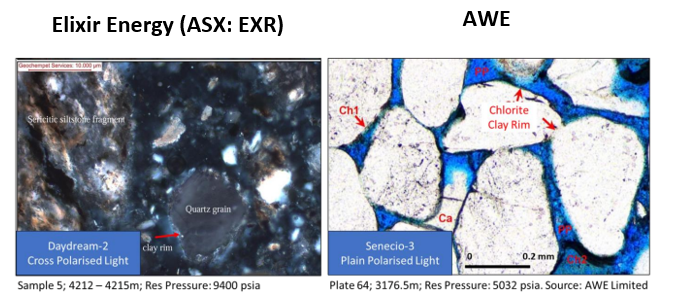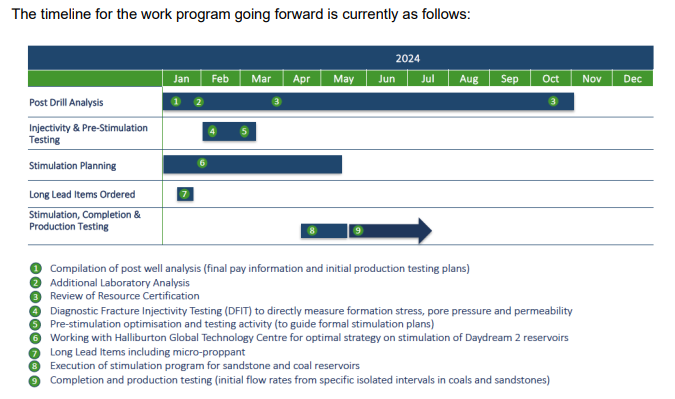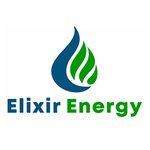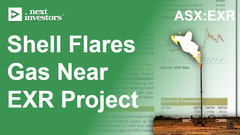EXR releases lab results from QLD gas project
Our 2019 Energy Pick of the Year Elixir Energy (ASX: EXR) just put out preliminary lab results for its Daydream-2 well drilled last year.
Late last year, EXR drilled the Daydream-2 well in QLD for gas.
Daydream-2 was an appraisal well, meaning EXR was targeting an existing gas discovery.
The primary objective was to confirm the data EXR already had and to set up the project for a flow test in 202.
At Daydream-2 EXR hit exactly what it expected across the unconventional gas bearing zones BUT the company also hit a surprise free flowing gas section…
Here is what happened:
- Expected News: EXR hit unconventional tight gas structure - EXR hit gross pay of ~607m of the unconventional gas structures. A few weeks later EXR announced ~154m of net pay across these structures.
- Unexpected News: EXR hit a conventional section at the end of its well flowing free gas to surface. Field estimates were for ~50,000 cubic feet of gas - which had to be flared...
EXR was expecting to find an unconventional gas reservoir and then stimulate (frack) it to flow gas - like the other discoveries in the region.
However, finding free flowing gas in deep sections has significant upside implications for the entire basin, and especially for EXR’s permit area where it was actually found.
We covered that big news in our last EXR note here - Did EXR Just Unlock Another Australian Deep Gas Play?
Today, EXR announced preliminary lab results from the well, here are our key takeaways from the results:
1. Clay rims identified.
EXR confirmed that the unexpected free flowing gas section of its wells had “clay coatings”.
At a very high level, the clay rims help the gas free flow to surface.
These clay rims are also found in the deeper sections of the Perth Basin.
As such, these results show analogous geology to some of the biggest onshore gas discoveries in Australia over the last 30 years.
Without the clay rims structures, EXR’s well would not likely be able to free flow gas to the surface and would instead need to stimulate the well to get gas to surface (through fracking).
2. EXR put out comparisons between its free flowing gas section and the ones from AWE’s Waitsia discovery (one of the biggest in the Perth Basin).
In our last EXR note, we discussed the analogues of EXR’s Daydream-2 well and the giant discoveries made in the Perth Basin: Did EXR Just Unlock Another Australian Deep Gas Play?
In today’s announcement EXR also put out a comparison between the clay rims identified at its project and the ones from AWE’s Waitsia discovery.

In 2014, the way companies look at the Perth Basin changed when AWE made the Waitsia discovery - Australia’s largest conventional onshore discovery in the last 30 years.
In September 2014, AWE started drilling what was originally an unconventional appraisal well.
Similarly to EXR, AWE was drilling to test known gas-bearing reservoirs (Dongara/Wagina), BUT the well was drilled deeper to test seismic targets at depth.
The well successfully tested the known reservoirs AND also hit gas pays in a tight reservoir in the lower reservoirs (Kingia and High Cliff reservoirs).
Eventually, AWE was taken over by Japanese conglomerate Mitsui for $602M.
While it's far too early to make the same call for EXR, the image above shows the similarities between the two in terms of the geology in the free flowing gas section.
3. EXR is reporting pressures 80% higher than AWE’s Senecio-3 well.
EXR confirmed in today’s announcement that the reservoir pressures in the free flowing gas section of its well are ~80% higher than the pressures seen in AWE’s well.
The significance of this is that higher pressures should technically mean higher ultimate gas recovery rates and better project economics.
Of course, we will need to see the results from the flow test to be able to confirm this though.
It’s also important to note that this comparison is only from ONE of AWE’s wells in the basin, and comparisons to other wells may be different.
4. Porosity for the deeper reservoir sections are a lot better than expected
EXR also confirmed porosities greater than 10% were logged across the sandstone intervals, which is way above levels typically seen in similar reservoir structures.
Porosity is important because it gives us an idea of how likely the reservoirs are to be commercially viable and how well they might perform in future flow tests.
Generally, the higher the porosity %, the better.
What comes next for EXR’s QLD gas project?
EXR expects to have some of its flow testing equipment on site in the next few weeks.
Below is a timeline EXR had previously released for the Daydream-2 well:







